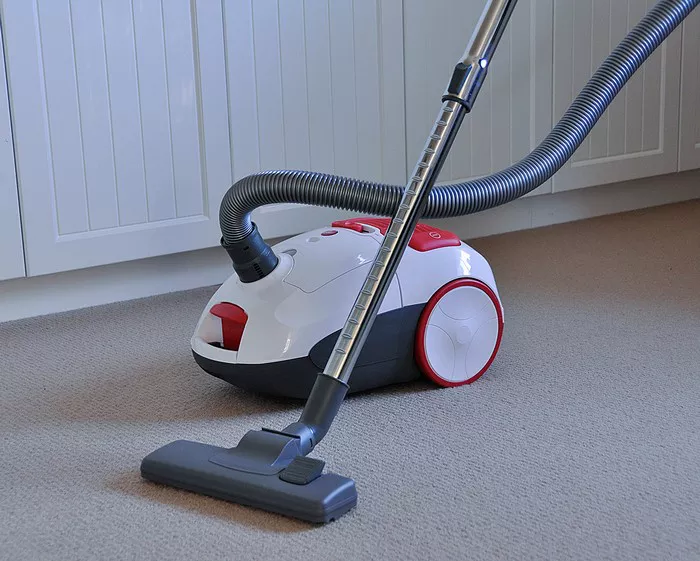Vacuum cleaners are indispensable tools in modern households and commercial settings, revolutionizing the way we maintain cleanliness and hygiene. A vacuum system, at its core, is designed to efficiently remove dirt, dust, and debris from various surfaces, providing a cleaner and healthier environment. Understanding the inner workings of vacuum cleaners is essential for users to maximize their effectiveness.
Principle of Operation
Central to the functionality of a vacuum cleaner is the concept of suction. Suction is created by the vacuum’s motor, which generates airflow. As air moves through the vacuum cleaner, it creates a low-pressure zone, causing air outside the vacuum to push dirt and debris into the vacuum’s nozzle and ultimately into the collection bin or bag.
Components of a Vacuum Cleaner
A vacuum cleaner comprises several key components, each playing a crucial role in its operation:
1. Motor: The motor powers the vacuum cleaner, generating the airflow necessary for suction. It is often located near the base of the unit and can vary in power and efficiency depending on the model.
2. Fan: The fan, typically connected directly to the motor shaft, draws air into the vacuum and creates the necessary airflow for suction. Its design and speed influence the vacuum’s performance.
3. Filter: Filters are essential for trapping dust and allergens, preventing them from being released back into the air. Common types include HEPA filters, which capture particles as small as 0.3 microns, and washable filters, which can be reused after cleaning.
4. Dust Collection System: This system collects and stores dirt and debris picked up by the vacuum. Bagged systems use disposable bags to contain the debris, while bagless systems have dust canisters that can be emptied and reused. Cyclonic and water filtration systems utilize centrifugal force or water to separate dirt from the air.
Types of Vacuum Cleaners
Vacuum cleaners come in various types, each offering distinct advantages:
1. Bagged: Bagged vacuum cleaners use disposable bags to collect dirt and debris. These bags are easy to replace and often provide superior filtration, making them ideal for allergy sufferers.
2. Bagless: Bagless vacuum cleaners feature dust canisters that eliminate the need for disposable bags. Users can simply empty the canister when it becomes full, reducing ongoing costs.
3. Cyclonic: Cyclonic vacuum cleaners utilize cyclonic action to separate dirt and debris from the airflow, preventing clogs and maintaining consistent suction power.
4. Water Filtration: Water filtration systems use water as a filtration medium, trapping dirt and debris in a water reservoir. These systems are effective at capturing fine particles and odors, offering improved air quality.
Step-by-Step Process
Understanding the step-by-step process of how a vacuum cleaner operates can help users make the most of their cleaning routine:
1. Dirt Collection: As the vacuum cleaner is moved across a surface, the nozzle suctions dirt and debris into the machine.
2. Airflow Generation: The motor and fan create airflow, directing dirt and debris into the vacuum’s filtration system.
3. Filtration: Filters trap dust and allergens, preventing them from being released back into the air.
4. Dust Collection: Dirt and debris are collected in the vacuum’s collection bin, bag, or canister.
5. Disposal or Emptying: Bagged systems require replacing the disposable bag when full, while bagless systems and cyclonic or water filtration systems can be emptied and cleaned as needed.
Maintenance Tips
To ensure optimal performance and longevity of a vacuum cleaner, regular maintenance is essential:
1. Filter Cleaning or Replacement: Clean or replace filters according to the manufacturer’s recommendations to maintain airflow and filtration efficiency.
2. Emptying the Collection Bin or Bag: Regularly empty the collection bin or bag to prevent clogs and maintain suction power.
3. Cleaning Brushes and Nozzles: Remove tangled hair, strings, and debris from brushes and nozzles to prevent obstructions.
4. Checking for Blockages: Periodically inspect hoses and airways for blockages that may hinder airflow.
5. Motor Maintenance: Keep the motor and fan free of dust and debris to prevent overheating and motor failure.
Troubleshooting Common Issues
Despite regular maintenance, vacuum cleaners may encounter common issues:
1. Loss of Suction: Check for blockages in hoses, filters, and airways. Clean or replace filters as needed and ensure proper airflow.
2. Unusual Noise: Inspect the vacuum cleaner for loose or damaged parts, such as belts or bearings. Tighten or replace components as necessary.
3. Brush Roll Issues: If the brush roll fails to turn or spins irregularly, check for obstructions and ensure proper belt tension. Clean or replace the brush roll as needed.
4. Overheating: Allow the vacuum cleaner to cool down if it overheats during use. Check for blockages and ensure adequate airflow around the motor and fan.
Conclusion
In conclusion, understanding how a vacuum system works is essential for users to effectively maintain and troubleshoot their cleaning equipment. By familiarizing themselves with the principles of operation, components, types, and maintenance procedures, users can ensure that their vacuum cleaners continue to deliver optimal performance and cleanliness for years to come.

